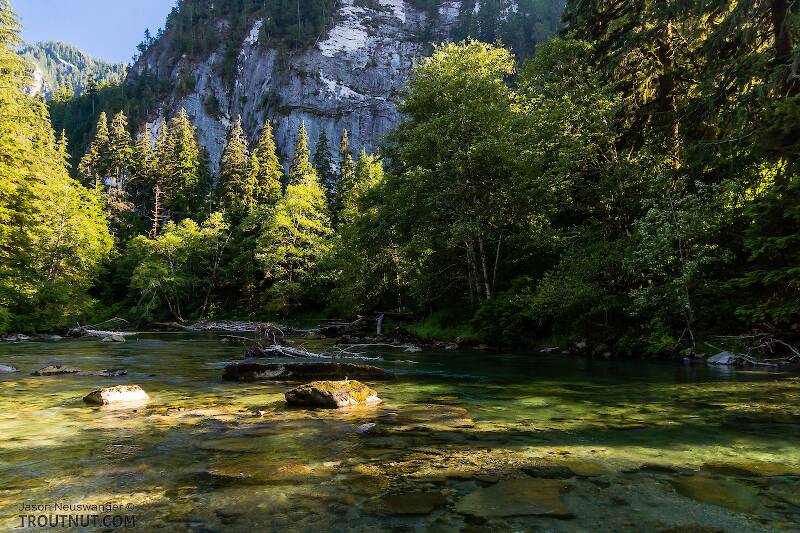
Blue-winged Olives
Baetis
Tiny Baetis mayflies are perhaps the most commonly encountered and imitated by anglers on all American trout streams due to their great abundance, widespread distribution, and trout-friendly emergence habits.


Mayfly Species Neoephemera bicolor
Where & when
In 1 records from GBIF, adults of this species have been collected during June (100%).
Species Range
Physical description
Most physical descriptions on Troutnut are direct or slightly edited quotes from the original scientific sources describing or updating the species, although there may be errors in copying them to this website. Such descriptions aren't always definitive, because species often turn out to be more variable than the original describers observed. In some cases, only a single specimen was described! However, they are useful starting points.
Male Spinner
Wing length: 10 mm
This species is the sole representative of the genus.
Head ruddy brown; margin of eyes pale ochreous. Thorax reddish brown; scutellum and anterior portion of mesonotum paler. Legs pale yellowish; fore tarsi slightly smoky. Wings hyaline; all veins colorless. Abdominal tergites reddish brown; posterior margins narrowly pale yellowish; a broad pale yellow median stripe, which becomes wider posteriorly on each tergite, is widest on 7 to 9, where only lateral patches of the brown color remain. Sternites pale, with lateral brownish shading; posterior margins narrowly whitish; on each sternite “just beneath the flange” is a blackish dot. Forceps pale yellowish; tails whitish. Genitalia shown in fig. 78.
Start a Discussion of Neoephemera bicolor
References
- Needham, James G., Jay R. Traver, and Yin-Chi Hsu. 1935. The Biology of Mayflies. Comstock Publishing Company, Inc.
Mayfly Species Neoephemera bicolor
Species Range
Resources
- NatureServe
- Integrated Taxonomic Information System
- Global Biodiversity Information Facility
- Described by McDunnough (1925)

